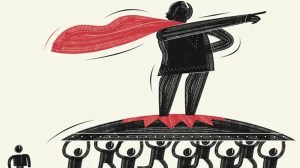Nepal Earthquake: What Indian rescue team brings to Ground Zero
10 teams, 45 personnel each, of India’s National Disaster Response Force are in Nepal. Their capability and the challenge
 IAF’s aircraft getting loaded before its take off from Bhatinda, Punjab on Sunday for Kathmandu, Nepal. (Source: PTI Photo)
IAF’s aircraft getting loaded before its take off from Bhatinda, Punjab on Sunday for Kathmandu, Nepal. (Source: PTI Photo)
10 teams, 45 personnel each, of India’s National Disaster Response Force are in Nepal. Their capability and the challenge
Where do rescue operations stand vis-à-vis the situation in Bhuj, 2001?
Fourteen years ago, bulldozers and earthmovers hauled debris, rescuers employed eyes and ears to search for people, and used their hands to pull them out. Bodies were located and recovered the same way. Sniffer dogs sometimes helped. The situation has improved dramatically since, both in terms of technology and specialised training. Rescue ops in quake-hit areas is a highly sophisticated exercise — known as CSSR, or ‘Collapsed Structure Search and Rescue’.
Also Read: NDRF rescue team begins sifting through rubble in Nepal
What are the major ways in which operations have changed?
Locating survivors is technology driven — thermal sensors and heartbeat detectors can find a living person 40-50 feet under concrete rubble. The technology is smart enough to be able to distinguish between a human and an animal. Modern equipment can cut through concrete quickly and precisely, and once a survivor is located, a 15- or 20-foot hole (triangular, since bricks hold well in this shape) can be drilled to lower a camera. A video conversation can infuse hope in a victim, urge him/her to not give up.
[related-post]
Once cutting begins, rescuers take precautions to ensure that debris does not fall inside, and smoke is sucked up, so it does not suffocate the trapped survivor. Modern rescue teams are trained to give first aid and attend to emergencies.
How qualified is the NDRF to deal with such a rescue operation?
The NDRF, established in 2006 in the wake of the 2004 tsunami, is now considered the world’s single largest dedicated disaster response force, with the best technology and highly trained personnel. It can tackle all kinds of disasters — quakes, floods, major accidents, even CBRN (Chemical, Biological, Radiological and Nuclear) emergencies. Its capabilities match the most stringent international standards, and it is in line to get certification from the International Search and Rescue Advisory Group, a global network of rescue forces under the UN.



- 01
- 02
- 03
- 04
- 05



































